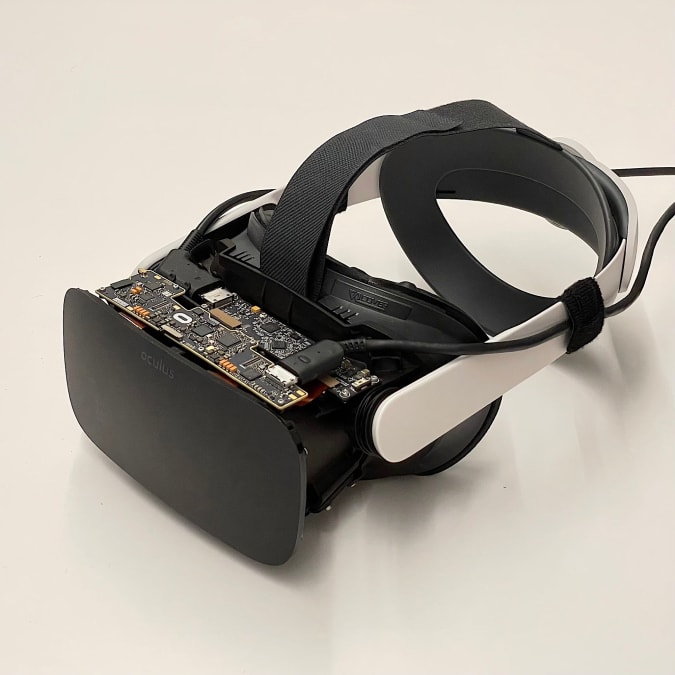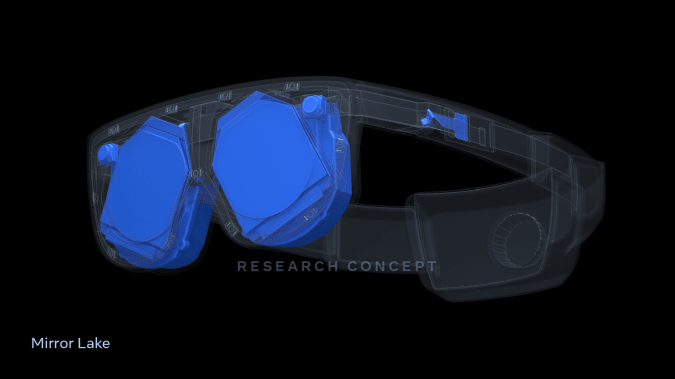Meta wants to make it clear it’s not giving up on high-end VR experiences yet. So, in a rare move, The Company is Spilling the Beans on Several VR Headset Prototypes at Once. The goal, according to CEO Mark Zuckerberg, is to eventually craft something that could pass the “visual Turing Test,” or the point where virtual reality is practically indistinguishable from the real world. That’s the Holy Grail for VR enthusiasts, but for Meta’s critics, it’s another troubling sign that the company wants to own reality (even if Zuckerberg says he doesn’t want to completely own the metaverse).
As explained by Zuckerberg and Michael Abrash, Chief Scientist of Meta’s Reality Labs, creating the perfect VR headset involves perfecting four basic concepts. First, they need to reach a high resolution so you can have 20/20 VR vision (with no need for prescription glasses). Additionally, headsets need variable focal depth and eye tracking, so you can easily focus on nearby and far away objects; as well as fix optical distortions inherent in current lenses. (We’ve seen this tech in the Half Dome prototypes.) Finally, Meta needs to bring HDR, or high dynamic range, into headsets to deliver more realistic brightness, shadows and color depth. More so than resolution, HDR is a major reason why modern TVs and computer monitors look better than LCDs from a decade ago.
Meta
And of course, the company needs to wrap all of these concepts into a headset that’s light and easy to wear. In 2020, Facebook Reality Labs showed off a pair of concept VR glasses using holographic lenses , which looked like oversized sunglasses. Building on that original concept, the company revealed Holocake 2 today (above), its thinnest VR headset yet. It looks more traditional than the original pair, but notably Zuckerberg says it’s a fully functional prototype that can play any VR game while tethered to a PC.
“Displays that match the full capacity of human vision are going to unlock some really important things,” Zuckerberg said in a media briefing. “The first is a realistic sense of presence, and that’s the feeling of being with someone or in some place as if you’re physically there. And given our focus on helping people connect, you can see why this is such a big deal. ” He described testing photorealistic avatars in a mixed reality environment, where his VR companion looked like it was standing right beside him. While “presence” may seem like an esoteric term these days, it’s easier to understand once headsets can realistically connect you to remote friends, family and colleagues.
metas upcoming Cambria headset appears to be a small step towards achieving true VR presence, the brief glimpses we’ve seen at its technology makes it seem like a small upgrade from the Oculus Quest 2. While admitting the perfect headset is far off, Zuckerberg showed off prototypes that demonstrated how much progress Meta’s Reality Labs has made so far.
Meta
There’s “Butterscotch” (above), which can display near retinal resolution, allowing you to read the bottom line of an eye test in VR. To achieve that, the Reality Labs engineers had to cut the Quest 2’s field of view in half, a compromise that definitely wouldn’t work in a finished product. The Starburst HDR prototype looks even wilder: It’s a bundle of wires, fans and other electronics that can produce up to 20,000 nits of brightness. That’s a huge leap from the Quest 2’s 100 nits, and it’s even leagues ahead of super-bright Mini-LED displays we’re seeing today. (My eyes are watering at the thought of putting that much light close to my face.) Starburst is too large and unwieldy to strap onto your head, so researchers have to peer into it like a pair of binoculars.
Meta
While the Holocake 2 appears to be Meta’s most polished prototype yet, it doesn’t include all of the technology the company is currently testing. That’s the goal of the Mirror Lake concept (above), which will offer holographic lenses, HDR, mechanical varifocal lenses and eye tracking. There’s no working model yet, but it’s a decent glimpse at what Meta is aiming for several years down the road. It looks like a pair of high-tech ski goggles, and it’ll be powered by lcd displays with laser backlights. The company is also developing a way to show your eyes and facial expressions to outside observers with an external display on the front.


